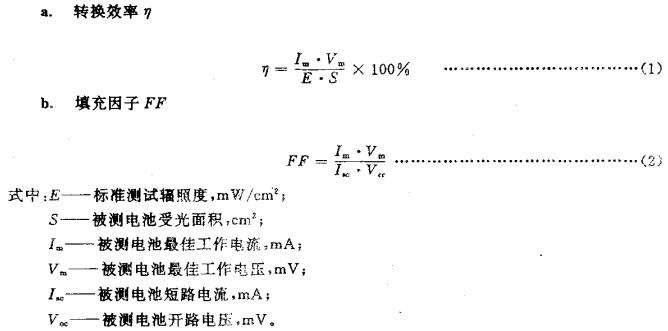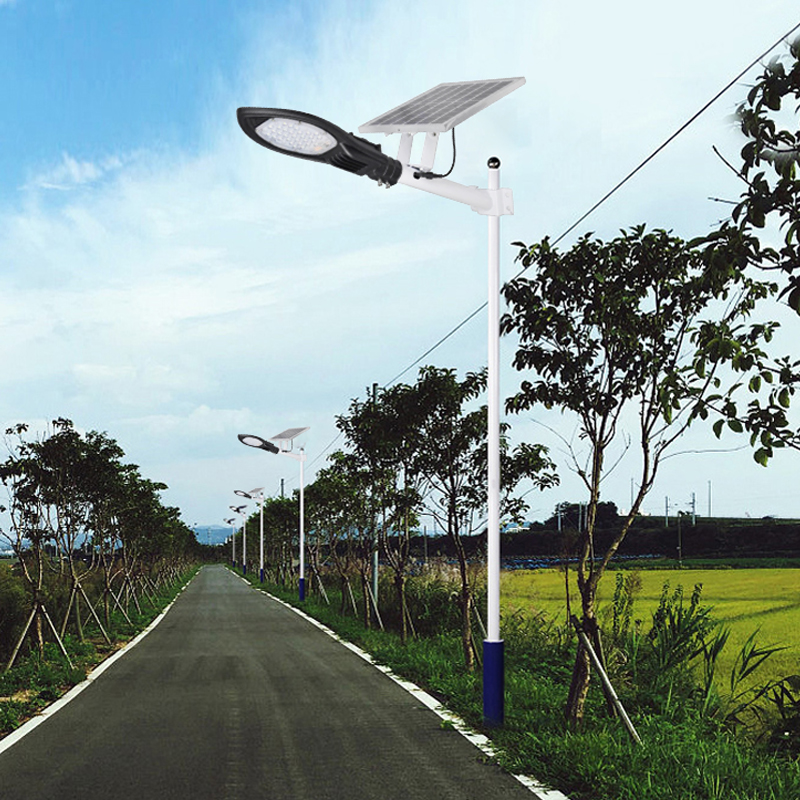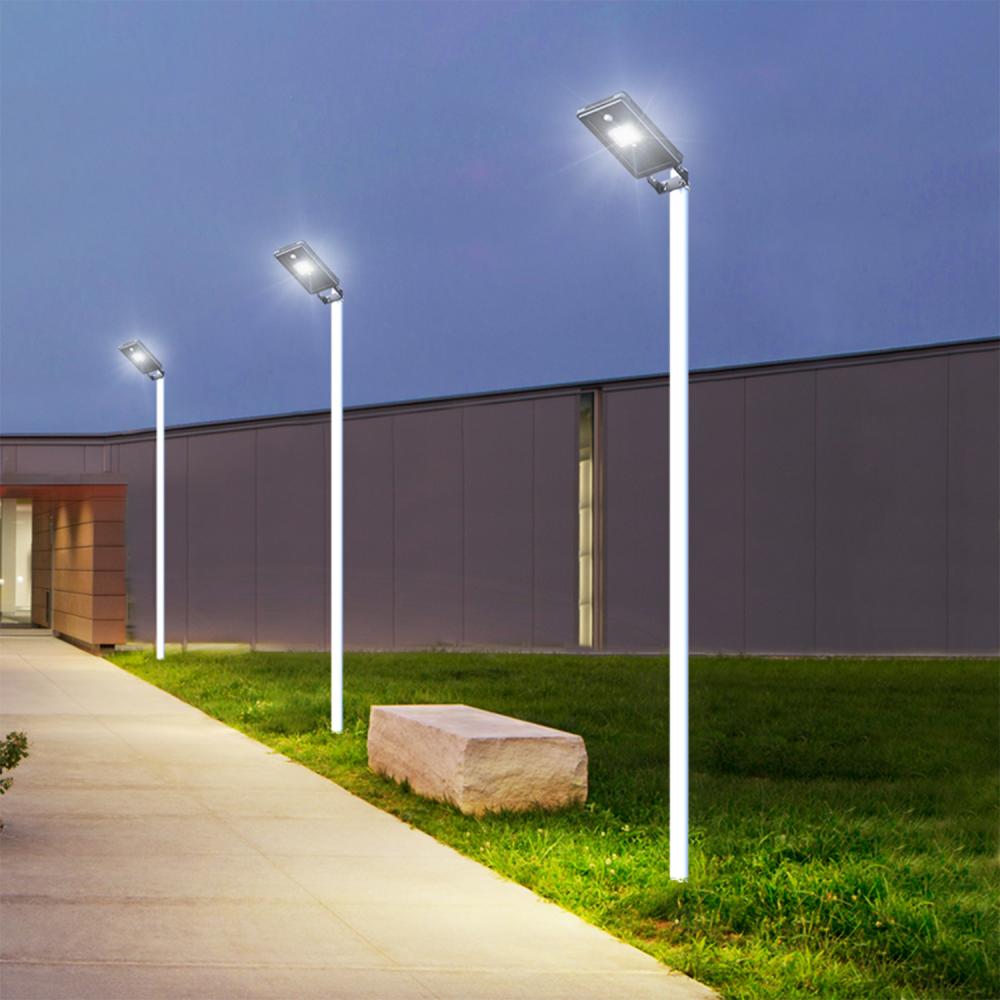1 Theme content and scope of application
This standard specifies the technical requirements, test methods, inspection rules, markings, packaging, transportation and storage of TDA75 monocrystalline silicon solar cells for use on the ground.
This standard applies to monocrystalline silicon as the base material, the use of conventional technology for the production of ground 75mm diameter solar cells.
2 reference standards
GB 191 packaging and storage icon logo
GB 2296 solar cell model naming method
GB 2829 periodic inspection count sampling procedure and sampling table
GB 4122 Packaging General Terms
GB 6493 standard solar cell for the ground
GB 6495 ground solar cell electrical performance test method
GB 2297 Solar Photovoltaic Energy Deep System Terminology
GB 12632 Monocrystalline Solar Cell General Specification
3 Technical requirements
3.1 Appearance
3.1.1 Surface condition
The color of the battery should be uniform and there should be no obvious spotty. There shall be no cracks, scratches, and dirt; no more than two edge breaks shall occur within a range of π/2rad. The distance between the collapse points is not more than 30mm, and the depth does not exceed the thickness of the silicon wafer. The area is not more than 1mm2.
3.1.2 Received light grid lines
a. The bus bar should be uniform and complete.
b. The boundaries of the grid lines should be clear. The connection between the main gate line and the fine gate line is allowed to have a break point below 1 mm; the fine gate line is allowed to fall off below 2 mm. The total number of break points and drop points should not exceed 1/5 of the total number of the gate lines.
c. The center point of the grid pattern and the center point of the battery surface should coincide. The error is not more than 0.50mm.
3.1.3 Lower electrode
The bottom surface of the battery should be flat. Clear boundaries. The surface area of ​​surface defects such as the degree of surface cracking, peeling and bubbling below 3mm2 shall not exceed 5mm2.
3.1.4 anti-reflection film
The anti-reflection film of the battery should be uniform, uniform in color and no obvious spotted spots.
3.2 Dimensions
The battery diameter is 75±0.50mm. The thickness is 0.30-0.50mm.
3.3 Electrical performance parameters
The battery electrical performance parameters should comply with the provisions of Table 1.

3.4 Temperature Alternation
After the battery has been circulated in an environment of 85°C, room temperature, and a temperature of 45°C for 5 cycles, the battery must not crack and the electrode does not come off.
The anti-reflective film does not change color, and the drop in test conversion efficiency should not be greater than 5% of the original value before the test.
3.5 antireflection film adhesion
The battery was boiled in deionized water for 15 min. After taking out and drying at room temperature, the drawing soft eraser film will not fall back and forth, and the drop value of the test short circuit electrical integrity shall not be greater than 5% of the original value before the test.
3.6 Electrode Adhesion
The battery busbar solder joints shall not fall off after a vertical static tensile test of not less than 0.4N/mm2. After 0.2N/mm2 polyester tape covering the entire area of ​​the battery, the drop in test conversion efficiency shall not be greater than 5% of the original value before the test.
3.7 high temperature, high humidity storage
The battery was stored for 48 hours at a temperature of 85°C and a relative humidity of 90%-95%, and the appearance was not damaged after 4 hours at room temperature. The drop in test conversion efficiency should not be greater than 5% of the original value before the test.
4 test methods
4.1 Appearance
4.1.1 Surface condition
Visually and using universal recliner measurements.
4.1.2 Receiving Grating Line
Visually and with measurement microscope measurements. Measuring microscope accuracy is not less than 0.01mm.
4.1.3 Lower electrode
Same method as in 4.1.2.
4.1.4 antireflection film
Visually.
4.2 Dimensions
Use vernier caliper measurement. Vernier caliper accuracy is 0.02m.
4.3 Electrical performance parameter measurement
4.3.1 Test methods for battery electrical parameters are measured in accordance with 2.4, 3.2 and 4.1-4.6 of GB 6495.
4.3.2 Calculation of Test Values ​​under Standard Conditions

4.3.3 The conversion method of test values ​​under non-standard test conditions shall be in accordance with the provisions of Article 2.5 of GB 6495.
4.4 Temperature Alternation
The battery is put into the cryostat from room temperature and starts to cool down. The cooling rate is 10±2°C/min, and it stays for 2 minutes when it is reduced to a temperature of 45±3°C, and then it is naturally taken out of the box to the room temperature and taken out. Place it for 2 minutes, and then put it in an electric drying oven. Raise the temperature from room temperature at 10±2°C/min. After rising to 85±2°C, stay for 2 minutes, and then unpack it to room temperature and take it out for 2 minutes. This is a temperature
Change the cycle. After 5 cycles of the battery, wipe dry with a dry ethanol-free drunken cotton ball.
4.5 antireflection film adhesion
According to GB 12632 4.7.
4.6 Electrode Adhesion
A red copper finish 50mm long, 2mm wide, and 0.2mm thick was welded to the thick end of the busbar on the light-receiving surface of the battery.
The solder joint is 2 x 2 (mm2). The battery is placed on the stage with the light receiving face down, and then the tensile test is carried out at the other end of the copper foil perpendicular to the welding surface. The force is gradually increased to 1.6N within 10 seconds without falling off.
After the battery solder joint has passed the tensile test, use a polyester tape with a width of more than 75mm and a tension of 0.2N/mm2 to evenly affix on the front of the battery, along the direction of the main grid, with an angle of 1800 to the battery surface. Pull it once at a speed of no more than 15mm/s; then stick the back electrode once again under the same conditions.
4.7 High temperature, high humidity storage
Put the battery from room temperature into a constant temperature and humidity chamber with a temperature of 85±2°C and a relative humidity of 90%-95%, store it for 48 hours, remove it, dry it, and allow it to stand at room temperature for 4 hours.
5 inspection rules
5.1 settlement inspection
5.1.1 The inspection of the batteries submitted by the inspection department of the production factory shall be carried out. If there is one unqualified battery, the battery shall be regarded as an unqualified product.
5.1.2
Settlement inspection items, order and technical requirements are stipulated in Articles 3.1, 3.2 and 3.3.
5.1.3 Settlement inspection method According to the provisions of 4.1, 4.2 and 4.3.
5.2 routine inspection
5.2.1 The battery is routinely tested once a year.
5.2.2 routine inspection According to GB 2829 provides a sampling plan. The discriminant level and the unqualified quality level (RQL).
Test items, sequence, technical requirements and test methods are specified in Table 2.

5.2.3 Routine inspections must be performed in any of the following situations:
a. New product test-type identification;
b. There are major changes in the production process of the product that may affect product performance;
c. When the product is discontinued for more than six months, when the child resumes production;
d. When the national quality supervision agency puts forward routine inspection requirements.
6 signs, packaging, transport axes, storage
6.1 Logo
6.1.1 Product mark: The product mark is printed on the inner packaging of the product. See Appendix A for the format.
6.1.2 packaging mark: printed on the surface of the product packaging. Should have: collection and delivery signs (name, specifications, gross weight, net weight, receiving units, consignees, delivery units, consignors); packaging and storage icon logo (be careful, heat, wet, The prohibition of scrolling) shall be in accordance with the pictorial regulations of Figures 1, 4, 6, and 8 in GB 191.
6.2 Packaging
6.2.1 Inner packaging: The specified number of batteries with the same performance parameters are sealed in flexible packaging; they can also be packaged in one piece.
6.2.2 Outer packing: The packing box is made of a certain rigid packing material, and shockproof cushioning materials are placed between the outer packing and the inner packing.
The packing box should meet the normal transportation conditions. The volume should meet the shipping regulations.
6.2.3 The box should have:
a. product certificate;
b. Product description;
c. Packing list.
6.3 Transportation
The battery is transported under the condition of external packaging, and it is forbidden to mix and transport with volatilized and corrosive goods during transportation.
6.4 Storage
Monolithic batteries should be stored in a desiccator or vacuum drying oven in batches before packaging; the storage environment should be ventilated, dry, and non-corrosive gases in the room. Single cells that have a shelf life of more than six months should be subjected to spot inspection or full inspection of the appearance and electrical performance parameters when packaged or sold.
High Quality Solar Panels
our Solar LED Street Light use the 100% Solar Panel:Grade A polysilicon 4-6H EXPRESS CHARGINGPolycrystalline silicon solar panel, high photo-electric conversion rate
LED Light SourceSMD5730 3030 2835 LED light source: high light efficiency and low light decay
TOUGHENED GLASS MASK
Toughened glass mask high hardness strong resistance
DIE-CASTING ALUMINUM LAMP BODYIntegrated die-cast aluminum housing waterproof anti-corrosion cold-resistant high-temperature resistant
Protection Rating ip65
multiple barrier seal design,rain and dust are seamless,easy to adapt to all kinds of weather
High Capacity Lithium Battery
Continuous lighting time up to 12 hours
rainy days can be used for 2~3days
INTELLIGENT LIGHT CONTROL
fully automatic sensing of weather changes ,no need to adjust automatic
charging during the day,automatic lighting at night,simpler lighting
Solar street light Multifunctional design Inteligent high-brightness light source energy saving era IP65 Waterproof ,100w 300w 500W solar street light Application
Solar LED Street Light Widely use for Courtyard,road,wall,park,square,etc



Solar led street light,solar led street split,split solar flood lights,solar lights. solar power light.
Shenzhen You&My Electronic Technology Co., Ltd , https://www.ymledtrade.com